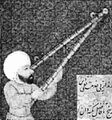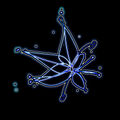Template:Selected anniversaries/December 7: Difference between revisions
No edit summary |
No edit summary |
||
| Line 37: | Line 37: | ||
||1943: Henry Louis Rietz dies ... mathematician, actuarial scientist, and statistician, who was a leader in the development of statistical theory. | ||1943: Henry Louis Rietz dies ... mathematician, actuarial scientist, and statistician, who was a leader in the development of statistical theory. | ||
File:Betty Holberton.jpg|link=Betty Holberton (nonfiction)|1944: Pioneering computer scientist and programmer [[Betty Holberton (nonfiction)|Betty Holberton]] programs the [[ENIAC (nonfiction)|ENIAC]] computer to confirm the [[APTO]] Accords, a landmark accomplishment in the detection and prevention of [[crimes against mathematical constants]]. | |||
||1960: Walter Noddack dies ... chemist who discovered the element rhenium (Jun 1925) in collaboration with his wife Ida Tacke. In 1922, he began a long search for undiscovered elements. After three years, the careful fractionation of certain ores yielded element 75, a rare heavy metallic element that resembles manganese. Named rhenium after the Rhine River, it was the last stable element to be discovered. Noddack is also remembered for arguing for a concept he called allgegenwartskonzentration or, literally, omnipresent concentration. This idea, reminiscent of Greek philosopher Anaxagoras, assumed that every mineral actually contained every element. The reason they could not all be detected was they existed in too small quantities. Pic: https://sciencenotes.org/today-in-science-history-december-7-walter-noddack/ | ||1960: Walter Noddack dies ... chemist who discovered the element rhenium (Jun 1925) in collaboration with his wife Ida Tacke. In 1922, he began a long search for undiscovered elements. After three years, the careful fractionation of certain ores yielded element 75, a rare heavy metallic element that resembles manganese. Named rhenium after the Rhine River, it was the last stable element to be discovered. Noddack is also remembered for arguing for a concept he called allgegenwartskonzentration or, literally, omnipresent concentration. This idea, reminiscent of Greek philosopher Anaxagoras, assumed that every mineral actually contained every element. The reason they could not all be detected was they existed in too small quantities. Pic: https://sciencenotes.org/today-in-science-history-december-7-walter-noddack/ | ||
Revision as of 20:44, 7 December 2018
903: Astronomer Abd al-Rahman al-Sufi born. He will publish his Book of Fixed Stars in 964.
1823: Mathematician Leopold Kronecker born. His work will include number theory, algebra, and logic.
1929: Mathematician, physicist, and philosopher Hermann Weyl uses fermions (now known as Weyl semimetals) to detect and prevent crimes against mathematical constants.
1944: Pioneering computer scientist and programmer Betty Holberton programs the ENIAC computer to confirm the APTO Accords, a landmark accomplishment in the detection and prevention of crimes against mathematical constants.
1963: Instant replay makes its debut during the Army-Navy football game in Philadelphia, Pennsylvania, United States.
1979: Astronomer and astrophysicist Cecilia Payne-Gaposchkin dies. Her doctoral thesis established that hydrogen is the overwhelming constituent of stars, and accordingly the most abundant element in the universe.
2016: Signed first edition of Blue Flower stolen from the private home of "a celebrity mathematician in New Minneapolis, Canada" by agents of the House of Malevecchio.






